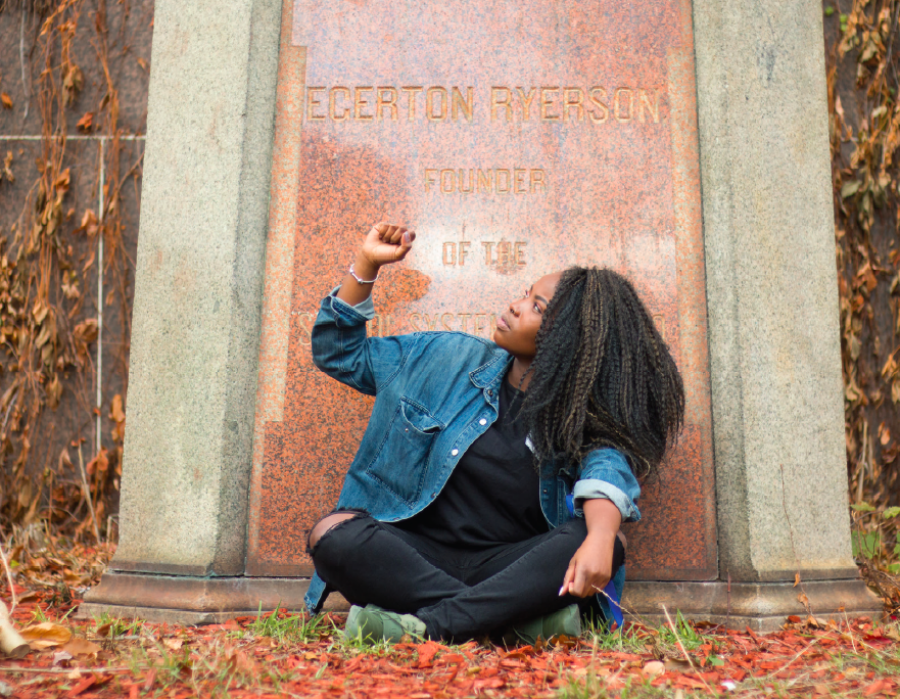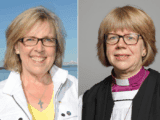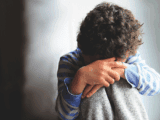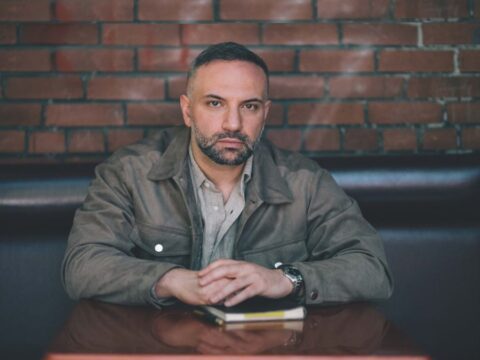A student-led social justice campaign at Toronto’s Ryerson University last summer was oddly reminiscent of the front-page volleys by a young Egerton Ryerson. The Methodist leader railed against Upper Canadian political elites as editor of the Christian Guardian almost 190 years ago. But this time, the target was Ryerson himself. Widely honoured as the parent of free, universal basic education in what is now Ontario, he also endorsed residential school education for Indigenous children. And the students feel the latter legacy trumps the former.
In a Facebook post, a coalition of student groups laid out 11 demands. The list included changing the university’s name to something “that does not celebrate a man who supported and created the structures of colonial genocide” and removing the towering statue of Ryerson from the campus. Dubbed “Colonialism 150,” the campaign, backed by the Ryerson Students’ Union, the Continuing Education Students’ Association of Ryerson and the school’s Indigenous Students’ Association, was intended as a counterpoint to last summer’s national Canada 150 celebrations.
You may unsubscribe from any of our newsletters at any time.
In the wake of the demands, the university has accelerated some of its reconciliation efforts and unveiled a new plaque describing Ryerson’s complicity in the residential school system. But so far, the name and statue remain in place. For churches and Canadian public institutions, the campaign is sure to encourage a closer look at how they deal with heroes of the past whose actions fail contemporary scrutiny.
With a highly diverse student population of over 40,000, Ryerson University has previously faced questions about its namesake’s support for residential schools. While speaking on campus 10 years ago, then national chief of the Assembly of First Nations Phil Fontaine referred to Egerton Ryerson’s role in the creation of residential schools and suggested the university offer to host a Truth and Reconciliation Commission (TRC) national event.
That didn’t happen, but in 2010 the university’s new Aboriginal Education Council — funded by an Ontario government program intended to help universities “include Aboriginal worldviews and values” in their operations — produced a document called “Egerton Ryerson, the Residential School System and Truth and Reconciliation.”
It said the university was “proud” of Egerton Ryerson’s contributions to education in Ontario but also acknowledged the role he played “in the conception of residential schools.” Last summer, nearly two years after the university signalled the beginning of its work on responses to the TRC, the activist students, frustrated by a perceived lack of urgency, set their own reconciliation agenda, drawing on the well-researched 2010 document.
In November, the university agreed to the students’ demands to create an Indigenous language course, educate public servants on the history of Aboriginal people and residential schooling, and fund a multi-year research program to advance reconciliation — all recommended by the TRC. The university will also hold an annual powwow. Further plans, including a pledge to “Indigenize” the university and curriculum, were announced at a January event marking the school’s response to the TRC’s calls to action. As part of the ceremony, current and former students unveiled a new plaque to sit alongside Egerton Ryerson’s statue. Designed with the help of Indigenous students, it notes his role in the design of residential schools and details some of their horrific consequences.
In an interview at her campus office late last year, Ryerson Students’ Union president Susanne Nyaga says the changes are a good start, but not enough. “Too often, folks that have experienced marginalization, experienced oppression . . . their voices aren’t heard when it comes to the remedies.”
Camryn Harlick, an Indigenous person and the student union’s vice-president of equity, agrees. As a key leader of the Colonialism 150 campaign, Harlick is disappointed with long delays by the university’s administration in addressing the demands. The new plaque is “a great first step,” but the campaign “won’t be over until the statue is gone and the name is changed.” Harlick understands the changes could take time but believes they are “a key component” to reconciliation. “Indigenous students shouldn’t have to walk by a statue of a man responsible for their ancestors’ genocide.”

It’s easy for liberal-minded Canadian Christians to support removing statues in the United States that honour Civil War-era generals or slave owners. Confronting our own checkered histories, missed opportunities and wrong turns is somehow more complicated.
For the United Church especially, Egerton Ryerson hits close to home. He was the first editor of the Christian Guardian, the Methodist journal that came into The United Church of Canada at church union in 1925 and is part of this magazine’s DNA (indeed, it’s what makes The Observer the longest continuously published English-language magazine in North America). Ryerson Press, launched as the Methodist Book Room in 1829, was owned by the United Church from 1925 to 1970. Ryerson was briefly principal of the Methodist-backed Victoria College (now part of the University of Toronto).
Central United in northwest Toronto, the first congregation Ryerson served in what was then the town of York, has a stained glass window depicting him as a circuit rider on horseback. Ryerson United congregations in Ancaster, Ont., and Hamilton have not discussed their namesake’s record on residential schools, nor considered name changes. But Dunbar Ryerson United in Vancouver, the product of a recent amalgamation, will change its name to Pacific Spirit United this spring, pending approval from the Canada Revenue Agency. Co-ordinating minister Rev. Debra Bowman says questions about Ryerson’s record on residential schools came up during name-change discussions late last year, and “people were feeling quite tender about that.” Those concerns may not have directly caused the name change, but they were part of the mix, she says.

Rev. Peter Wyatt, former principal of Emmanuel College in Toronto and a student of the Methodist roots of the United Church, says “Methodists generally, Ryerson included, were motivated by the desire to bring the Gospel and the perceived advantages of western culture to Indigenous people.” Ryerson is “implicated” in residential schools, he says, but “the positive aspect of the Ryerson students’ demands is that we have been stimulated to delve deeper into the records on Ryerson, and to learn more about him, his times and his legacies.”
So what does a closer look at Ryerson’s record tell us? Born in 1803, Egerton Ryerson rose to historical prominence through key roles he played in the Methodist church and Canada’s education system over a half-century. His public influence spanned two of the four stages of Aboriginal and non-Aboriginal contact, as described in the 1991 Report of the Royal Commission on Aboriginal Peoples: the end of the era of contact and co-operation and the early decades of a long phase of displacement and assimilation.
Throughout his years as a circuit-riding preacher and missionary to the Ojibway Mississaugas of the Credit River near Toronto, as an outspoken editor, and later as a civil servant shaping the education system in what would become Ontario, Ryerson had access to the viewpoints of Indigenous Methodist leaders. His close friend Kahkewaquonaby, also known as Rev. Peter Jones, was a convert to Methodism and chief of the Mississaugas. Along with fellow Ojibway convert Shawundais (Rev. John Sunday), Jones helped the Methodists set up missions in many Ojibway communities in Upper Canada (which became Canada West and later Ontario) in the 1820s and 1830s.
Ryerson’s Christian Guardian regularly published letters reporting on progress in Methodist Aboriginal missions, so he knew about their successes and challenges. Hope MacLean, an anthropologist now teaching at the University of Ottawa, researched early Methodist mission schools. One of her articles, published in 2002 and cited in the TRC’s study of residential schools, looks closely at Methodist day schools between 1824 and 1833 that had bilingual English and Ojibway instruction and used the advanced Pestalozzi method of teaching (a forerunner to today’s Montessori methods). MacLean’s article calls it “a positive educational experiment” and muses, “How different the whole history of Native education in Canada might have been, if that experiment had continued.”
In a 2005 journal article, MacLean points out that Ojibway leaders Jones and Sunday and other First Nations chiefs supported the earliest residential schools in Upper Canada. “What they expected of the residential schools when they were set up was much like a high school or junior college,” she says in an interview.
As late as an 1846 conference of Ojibway chiefs on residential schools (then called manual labour schools) in Orillia, government representatives dangled the promise of Ojibway-run institutions. When it became clear the promises were just another ploy to force people off their land, the chiefs refused the offer.
MacLean writes that by 1860, “all parties concerned — Ojibwa, government, and Methodist missionaries — considered the schools unsuccessful.” She wonders “why such an unsatisfactory system continued after Confederation.” By 1860, though, Canada West was at least three decades into a phase of displacement and assimilation that would not end until the late 1960s.
An 1879 report to the federal government by journalist and future Conservative member of Parliament Nicholas Flood Davin is widely credited with setting the stage for the establishment of “industrial schools,” now known as residential schools, across the young nation of Canada.
As the system took shape, Ryerson’s 1847 vision for what he called “industrial schools” was published by the federal government in 1898, 16 years after his death, in the Indian Affairs department’s first full statistical report on Indigenous schools. That letter to a federal official prescribes schools that provide nothing more than “a good plain English education adapted to the working farmer or mechanic.” Ryerson rules out other trades because of high training costs and limited need in Indigenous communities and writes that “the North American Indian cannot be civilized or preserved in a state of civilization (including habits of industry and sobriety) except in connection with . . . religious instruction and . . . religious feeling.”
Even when published, Ryerson’s thoughts on Indigenous schooling were a half-century out of context. Still, they were considered valid and valuable by residential school supporters. Seen through 21st-century eyes, they are undeniably racist.

Donald B. Smith, an Egerton Ryerson scholar and professor emeritus of history at the University of Calgary, points to subtle distinctions in Ryerson’s attitudes and actions. Smith jumped into the media fray with a Globe and Mail opinion piece last summer, soon after the students published their demands.
He sees “an injustice” in demands to rename the university and remove its namesake’s statue but says that “the research area is a minefield” and highly politicized. Egerton Ryerson, he says, is a good representative of his time because he’s an assimilationist. “The conventional wisdom is assimilation.” Still, says Smith, the Methodists were at least advocating actively on behalf of Ojibway converts and their communities. He notes that Ryerson, for instance, recommended naming Peter Jones as superintendent of Methodist missions but was not able to make it happen.
Nor were the Methodists able to do much to help Ojibway converts hold on to their land. In 1836, the Upper Canadian colonial government under Lieutenant Governor Sir Francis Bond Head forced several Indigenous bands to surrender their land to make way for settlers. The largest portion was the 300,000-hectare Saugeen tract, including much of the current Bruce and Grey counties. Indigenous people who had built houses and cleared farmland were forced to move to uncleared areas, usually with poorer land.
As MacLean’s studies suggest, part of Bond Head’s argument for removing Indigenous people from their land was their slow adaption to settlement life and poor attendance at Methodist day schools. Residential schools were seen as solutions to both of these colonial challenges.
Ryerson travelled to England with Peter Jones after 1836 to lobby the Crown to overturn the land surrenders. Ryerson’s knack for political persuasion had smoothed the way for the acceptance of Canadian Methodism as a legitimate denomination; in 1844, it would earn him his post heading up education in Canada West. But despite Ryerson’s diplomatic skills and support within the colonial office, their efforts to overturn land surrenders failed.
Revisited today, the destructiveness of the government’s assimilationist policies is clear, as is the culpability of churches in linking conversion with cultural annihilation. But now that these failures are recognized, what should be done? In some instances, such as the renaming of the Langevin Block building on Ottawa’s Parliament Hill (which honoured father of Confederation and residential school supporter Hector-Louis Langevin) the historical stain is simply washed away. Today, the building is called the Office of the Prime Minister and Privy Council.
Rev. Teresa Burnett-Cole, minister at Glebe-St. James United in Ottawa and a member of the United Church’s Caretakers of Our Indigenous Circle, says treatment of residential school students “shows the fundamental sickness of our western culture. . . . We don’t do so well with the vulnerable, whether they be women or children or elders.”
She applauds the students for drawing attention to the issue but cautions against the erasure of historical figures like Ryerson. “[History] doesn’t work that way. If anything, we need to be mindful of who these people are.”
Cindy Blackstock agrees. As executive director of the First Nations Child and Family Caring Society of Canada, she’s a full-time advocate for Indigenous children and families. She also leads a group of volunteers who are helping to rewrite the public histories of people on both sides of the residential school divide. They hope to give today’s schoolchildren a better understanding of residential schools and what went wrong.
Her group includes TRC commissioner Marie Wilson, residential school historian John Milloy, Ed Bianchi of KAIROS Canada and educator Charlene Bearhead. So far, they have successfully pushed for new or revised historical plaques at Ottawa’s Beechwood Cemetery for figures like Duncan Campbell Scott, a part-time poet and full-time civil servant who oversaw residential schools during 52 years in the Department of Indian Affairs; and Dr. Peter Henderson Bryce, a medical officer who first pointed out the schools’ deadly effects on Indigenous children’s health.
Blackstock, who received an honorary doctorate from Ryerson University last year, says Scott was “a loving father, played the piano, was head of the Ottawa Little Theatre company and during his day job ran these residential schools and consciously made decisions that resulted in the abuses and the deaths of thousands of kids.”
Bryce fought for years to improve children’s health in residential schools but was sidelined by Scott. After retiring in 1921, he published his research under the title The Story of a National Crime: Being an Appeal for Justice to the Indians of Canada.
Project of Heart, an educational organization run by volunteer teachers, with some funding from the United Church, offers resources to classrooms and learning groups. Children learn about Bryce and Scott, says Blackstock, “and the fact that these two lived in the same time, were in conversation with one another, really makes this whole thing a moral choice.”
It’s not clear that Egerton Ryerson made such distinct moral choices with so obvious and immediate effects. It is clear, though, that he could have listened more carefully and closely to his Indigenous colleagues and friends. As problems mounted with the early residential schools and the Ojibway leaders withdrew their support, he could have done the same and rejected the model. Despite this legacy, Blackstock doesn’t think it’s useful to erase people like Ryerson from history. Instead, she says, we should think “more about what he can teach us about reconciliation.”
For young Indigenous students at Ryerson University, that may not be enough. In helping to unveil the new Ryerson plaque in January, Sarah Dennis of the Indigenous Students’ Association said it won’t change the way many students feel about the statue, but will inform the public of “a false idol.” Danielle Sinclair, who is Anishinaabe and a recent graduate, also spoke at the event, saying she hoped the plaque would “open a space for a new conversation.” Where that conversation leads and what it means for Methodism’s now-tarnished hero remains to be seen.














